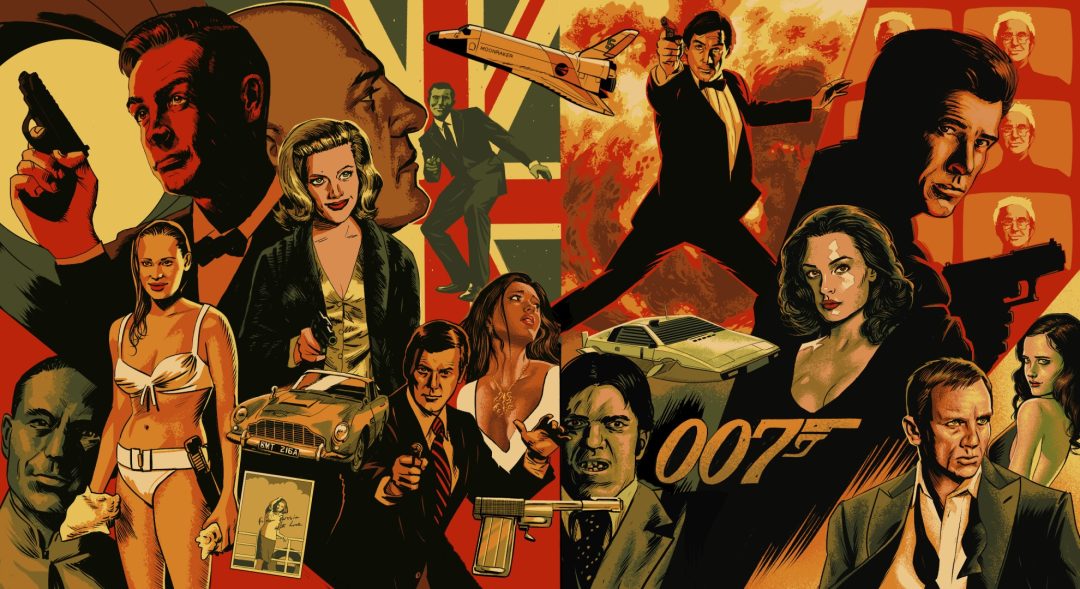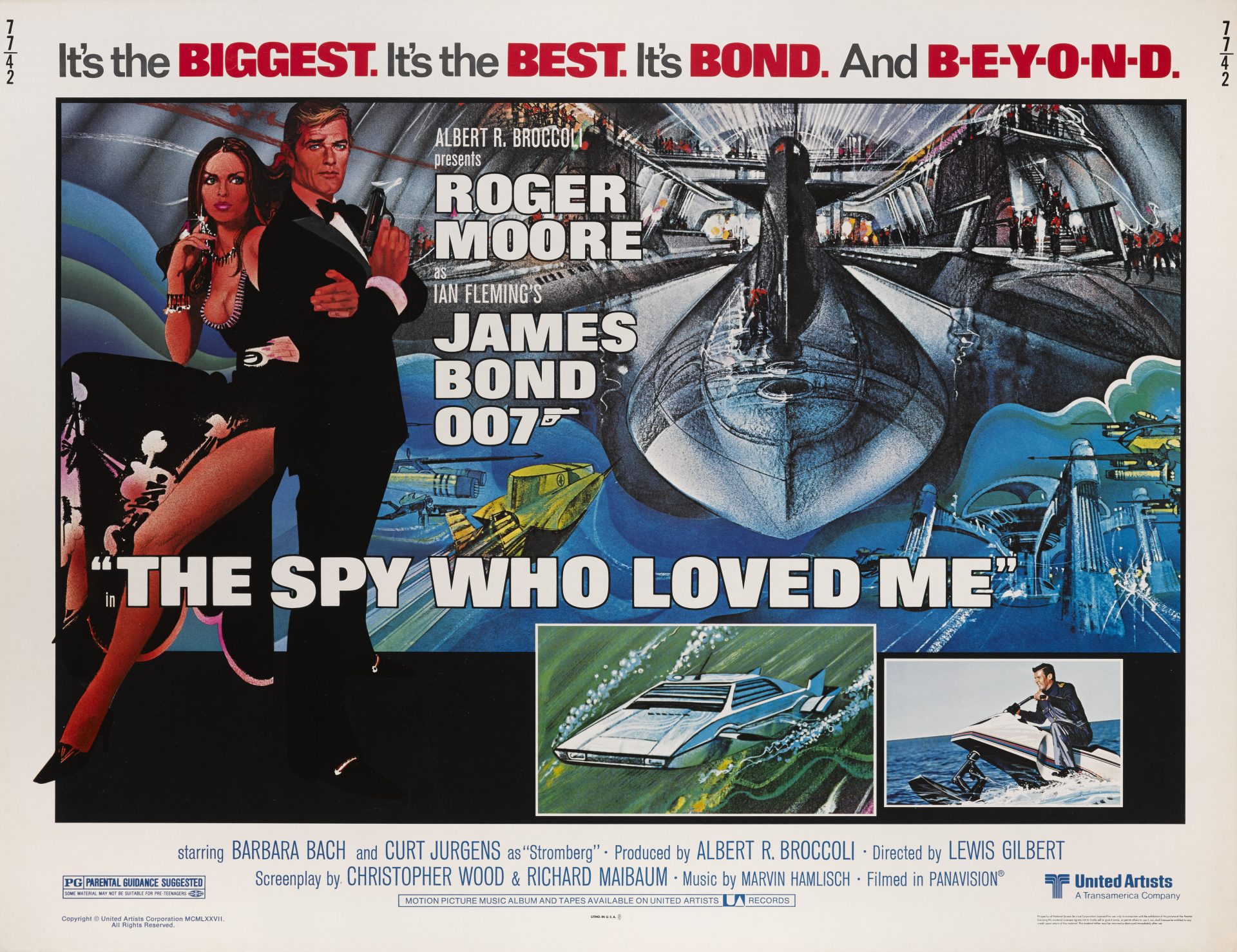
The Spy Who Loved Me – Behind The Scenes
One half of the Bond-producing duo, Harry Saltzman, tried his hand at branching out into other productions. Quite a few of those didn’t generate good returns.
He started to struggle financially. As a result, Saltzman had been offering his shares in Danjaq as collateral for his loans, and UBS attempted to foreclose on them. Saltzman was also attempting a hostile takeover of Technicolor, which led to a lawsuit. Meanwhile, Broccoli refused to allow Saltzman to use Danjaq funds to fight the lawsuit.
In retaliation, and with the effects of his wife’s terminal cancer diagnosis pushing him into clinical depression, Saltzman refused to allow another Bond film to go forward.
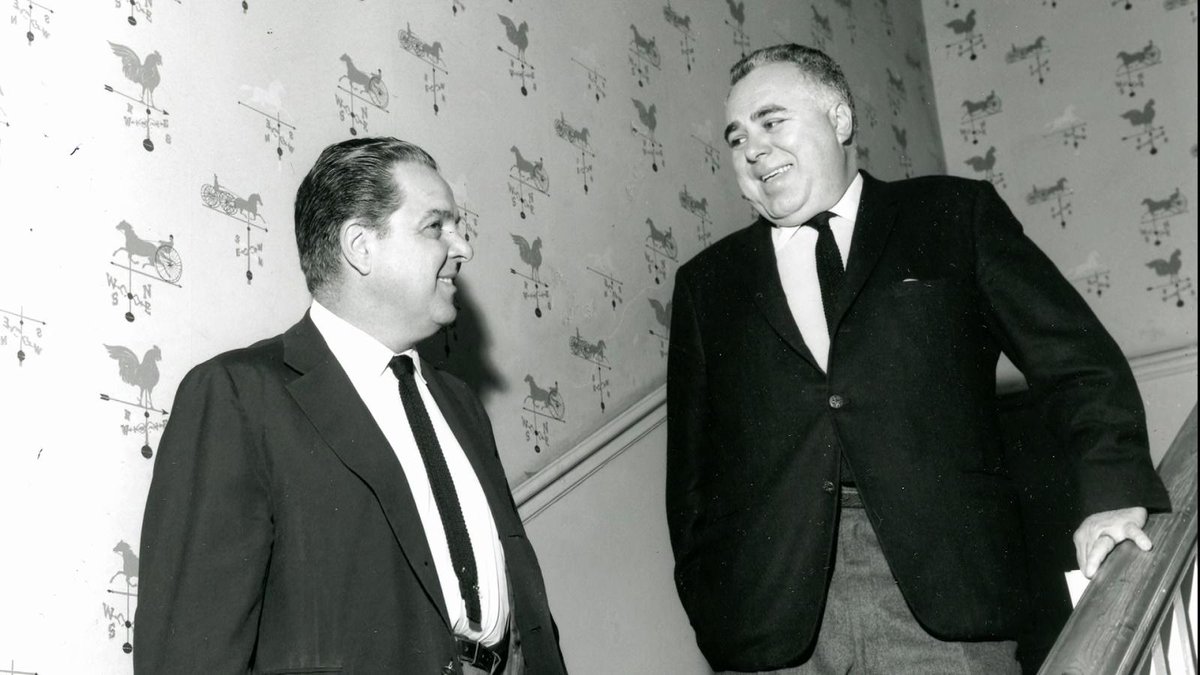
Under Danjaq’s distribution agreement with United Artists, Danjaq had to produce a Bond adaptation every eighteen months or run the risk of losing the rights to the series. The deadlock placed the entire franchise at risk, and many potential suitors for Saltzman’s shares began circling, including David Frost.
Eventually, Saltzman agreed to sell his shares directly to United Artists so that another Bond film could go forward. Broccoli initially objected to the deal, but he changed his mind after Saltzman received a counter-offer to sell his rights to rival studio Columbia Pictures.
For Broccoli, it was better the devil you know. United Artists were long-time partners in Bond, which felt more comfortable than a new studio.
So Saltzman was out and Broccoli was on his own.
Immediately they mobilized to make a new movie. Guy Hamilton had directed the previous three Bond films as well as Goldfinger. He was brought back. Then he was offered the opportunity to direct Superman and left the production. Broccoli turned to Lewis Gilbert, who directed You Only Live Twice.
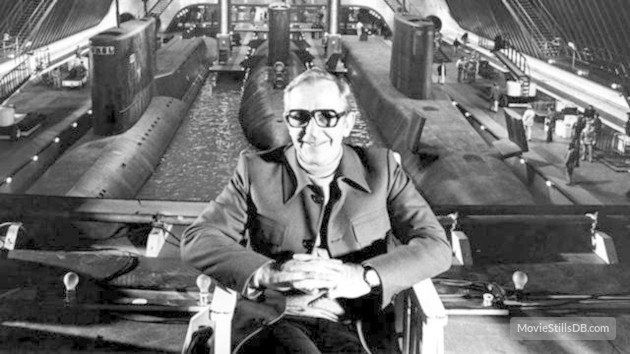
One problem was solved, but another reared its head. Fleming permitted Eon to use only the name of his novel, but not the actual plot, as he disliked the book. This necessitated the need to come up with an original storyline.
The story Broccoli and company came up with then got attacked by old Bond nemesis Kevin McClory, who claimed plagiarism.
The court did not side with McClory. At last, Eon was free to move full-speed ahead. Originally, Anthony Burgess and John Landis had taken a crack at the script. Once Gilbert came on, he brought in Christopher Wood.
The Bond think tank had a shelved idea floating around in their files about a supertanker that swallowed submarines. It was decided that this would be the idea the film was built around.
Brainstorm sessions looked at setting the film in the Far East. Gilbert recalled a story he read about an underwater laboratory in Japan. Everyone agreed that would make a great lair for a villain. From there it was a hop, skip, and a jump to come up with the villain’s motivation of wiping out the surface world to preserve the oceans.
With the arrival of a different director came a different perspective. Gilbert thought they were trying to turn Moore into Connery, which was a mistake, especially Bond’s treatment of Maud Adam’s character in The Man With The Golden Gun. Gilbert wanted Bond to be very British, very smooth, and with a sense of humor.
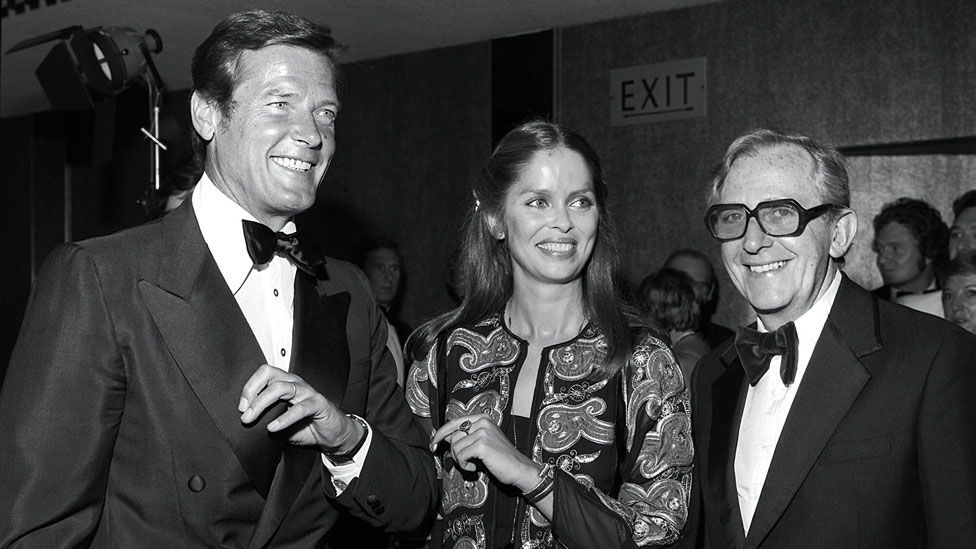
Gilbert was also instrumental in bringing in Curt Jurgens to play supervillain Stromberg. Gilbert had worked with Jurgens before and appreciated the man’s acting ability and intelligence. As a testament to his talent, Jurgen spoke five languages and could act in every one of them.
Producers held dozens of tests to find a Bond girl who could be Bond’s equal. None of the women showed the required spark. Lois Chiles was the front runner and then her agent informed the production that she was retiring. She would appear in the next installment, however.
Danny Risner was an executive at United Artists at the time. He told producers he knew an actress, Barabara Bach, who might be good for a small role in the film, maybe as a hotel clerk or something. Gilbert gave Bach a screentest and knew right away she was what they were looking for in a leading lady.
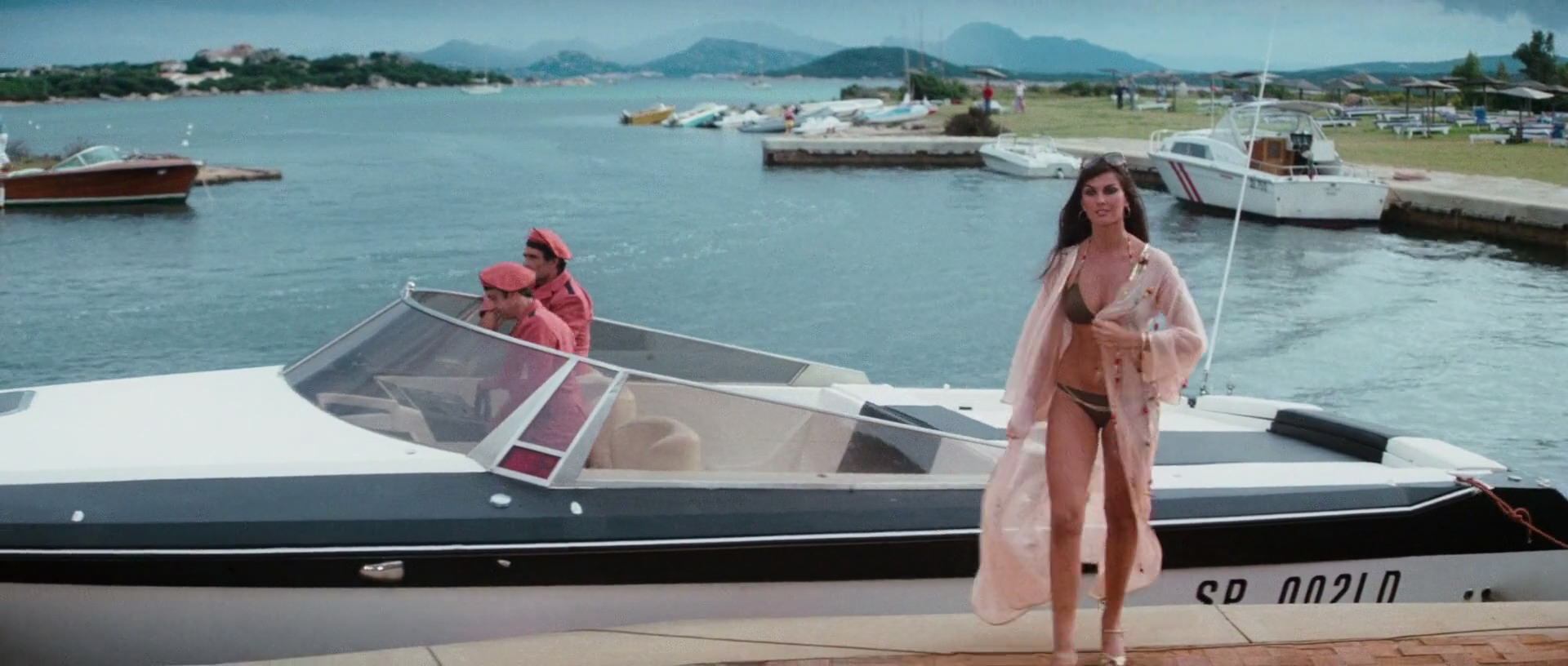
Meanwhile, Caroline Munro entered the film because Broccoli saw her in a series of magazine ads where she portrayed a strong female character, even wearing a knife with a wet suit, hearkening back to former Bond actress Ursula Andress. Broccoli requested a meeting and cast Munro.
The Spy Who Loved Me also marks the first appearance of Bond’s most famous Henchman: Jaws. The character was named Horror in the book, but Broccoli had the idea of naming him Jaws, no doubt piggybacking on the success of the Speilberg film.
Richard Keil was brought in for the role. Keil thought it all sounded a bit ridiculous, but he went to England to be fitted with the famous metal teeth anyway. The teeth were designed by Katharina Hobbs. She used metal gears as her inspiration. The teeth were very uncomfortable for Keil. He could only wear them for a few moments at a time.
Keil felt this gave his performance a unique aspect, as he had to simultaneously act like he enjoyed his metal teeth, even as he couldn’t stand wearing them and had to fight the gag reflex.
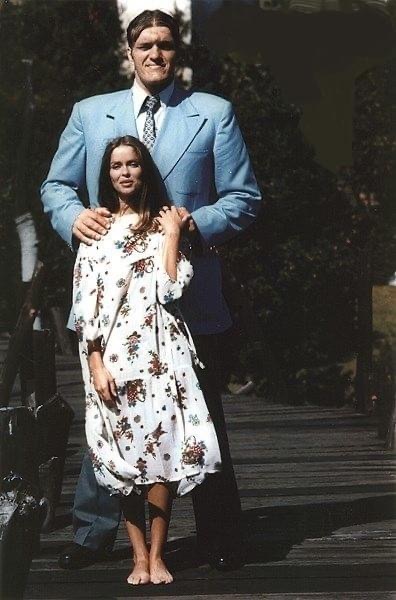
The idea for The Spy Who Loved Me’s pre-title sequence originated with Michael Wilson. He saw an ad in a magazine that featured a man skiing off a mountain. The man in the photo turned out to be Rick Sylvester. Wilson immediately contacted the daredevil skier.
Sylvester told the Bond producers that the photo was staged. He didn’t actually ski off a mountain. Nevertheless, he was perfectly willing to do such a stunt. He even knew of a place to do it — Mount Asgard in the Arctic Circle.
Broccoli and company weren’t convinced, but they were willing to look into it. Future Bond director John Glen travelled to the location to scout it. As soon as he showed the test footage to Broccoli, the stunt was instantly greenlit. Crew was dispatched to film the pre-title sequence before official filming of The Spy Who Loved Me even began.
Once the camera unit and Sylvester arrived at Mount Asgard, all they could do was sit around and wait. The weather was too bad to make filming possible.
As the days and costs piled up, Broccoli started to get the feeling Sylvester lost his nerve. Broccoli called Sylvester up and told him that if he was having second thoughts, he should cancel the stunt; no film was worth Sylvester’s life.
This was all news to Sylvester. He told Cubby that he was only waiting for the weather to clear up. He was all in on making the jump.

Finally, the weather changed. Everything was set. John Glen manned a red flag and informed Sylvester that he must not start his run until the red flag was buried in the snow. Glen was well aware of stunts going wrong due to miscommunication, such as what happened on the climax of Diamonds Are Forever, where explosions were detonated prematurely.
At last, the moment came. Glen buried the flag in the snow and told Sylvester to go for it. Sylvester obliged and whooshed straight off the mountain. Sure enough, problems developed.
The master shot from a helicopter missed Sylvester completely. Another camera also did not catch the jump. Fortunately, a third camera caught Sylvester throughout the full course of the spectacular stunt.
The final gag of having Bond’s parachute be the Union Jack was Christopher Wood’s idea. Wood was gratified to see that the scene always brought the house down when it played in theaters. Christopher Wood proved that he understood the Bond concept. His goal was to do everything the same…but different.
Wood also recognized the audience’s love for Q. Wood made sure to feature a scene that focused on Q and a multitude of gadgets for the audience to enjoy.
After a two-movie hiatus, Bond production designer extraordinaire returned, Ken Adam. Ever evolving, Adam wanted to start introducing more curved shapes into his designs. This is especially evident with the lines of Stromberg’s underwater lair, which resembles a mechanical octopus.
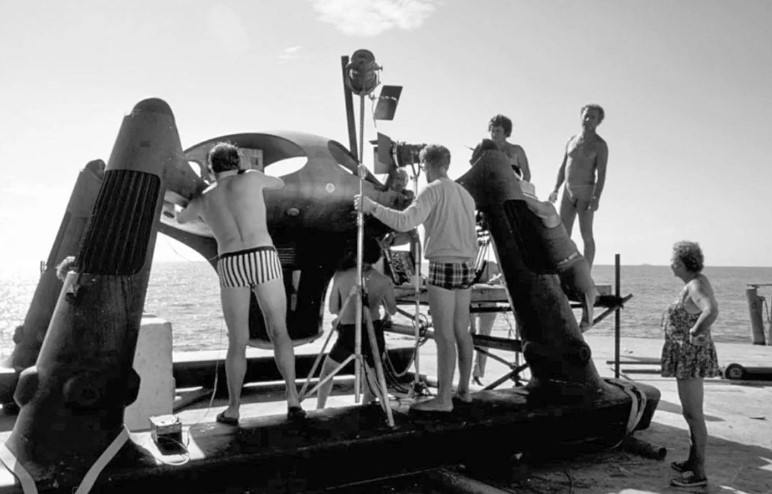
Don McLaughlan, then head of public relations at Lotus Cars, learned Eon needed a new partner to provide Bond with a vehicle, as Aston Martin was in financial trouble. He drove a prototype Lotus Esprit with all Lotus branding taped over it, and parked it outside the Eon offices at Pinewood studios.
On seeing the car, Eon asked Lotus to borrow both of the prototypes for filming. The design of the Lotus automobile also lent itself nicely to Adam’s ideas for a submarine/car.
Initial filming of the car chase sequence resulted in disappointing action. While moving the car between shoots, Lotus test driver Roger Becker so impressed the crew with his handling of the car that he was made the main stunt driver for the rest of the filming on Sardinia.
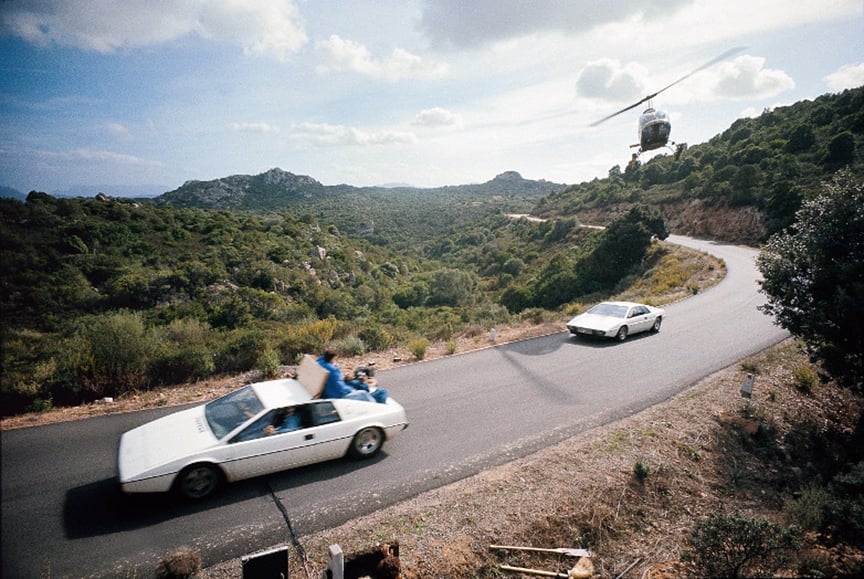
Meanwhile, the second unit discovered they needed an additional Lotus automobile to complete their shots. They contacted the company, and Lotus informed them they didn’t have a second car available, as they only manufactured a couple of vehicles per week. Peter Lamont then asked:
“What about the chairman’s car? Why don’t you ask him?”
As expected, the chairman was delighted to help out with a Bond movie and lent production his personal car.
When it came to the underwater scenes where the Lotus transforms into a submarine, seven shells were used, one for each gag of the Lotus’s transition.
A final model that actually worked underwater was built by a company in Miami, Perry Submarines, which greatly enjoyed the challenge.
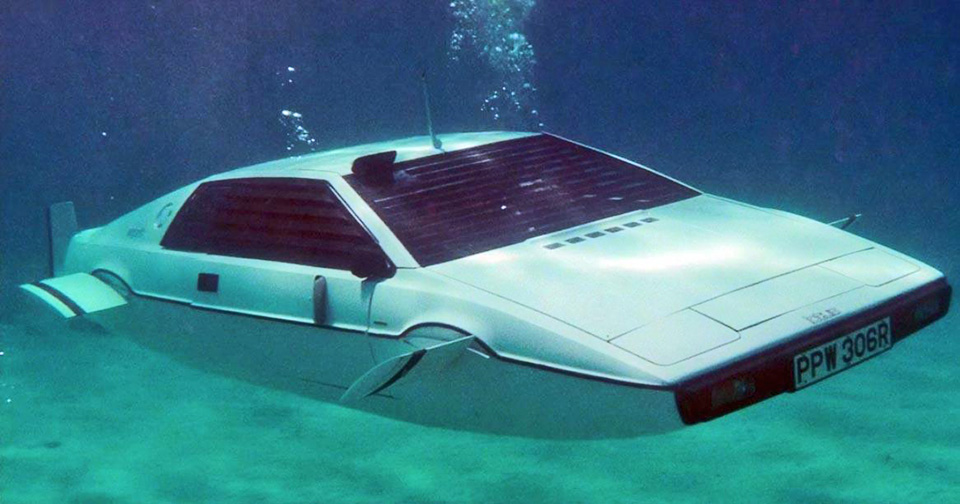
When it came to the supertanker, Adam and company originally wanted to use a full-size ship. Effects specialist Derek Meddings disagreed with this approach. He thought they should use a miniature, as they had to blow the ship up in the end.
The Shell Company agreed to let the Bond crew use one of their ships for filming. As it turned out, an empty tanker is more dangerous than a full tanker due to the fumes. Shell said the Bond crew could use the ship for free, but they had to pay the insurance on it, which amounted to £50,000 a day – about $130,000 back then.
Even Bond couldn’t afford that astronomical amount. Gilbert came out of that meeting, went directly to Meddings and said:
“Well, boy, it’s all going to be a miniature!”
Meddings built the supertanker based on scaled-up dimensions from the submarines it needed to swallow. The miniature ended up being 65 feet long and was powered by a 48-horsepower motor. The miniature was so well done that when the Shell captain saw the movie, he had no idea that his ship hadn’t actually been used for filming.
While effects craftsman could get by with small-scale stuff on some things, production needed to go big for the actual set of the supertanker interior. They tried finding locations all over. None fit the bill.
Broccoli then made the decision to build a stage, which led to the creation of the 007 Stage at Pinewood. It took 13 weeks to build. The supertanker set was actually built as the mammoth stage went up around it.

The huge set proved to be a challenge for Adam and the cameraman. Cinematographer Claude Renoir was the grandson of painter Pierre-Auguste Renoir. He obviously inherited ability from this pedigree, but the supertanker set proved to be a greater task than he could manage.
When Gilbert and Adam asked Claude how he would light the set, Claude said, “To tell you the truth, I can’t even see to the end of it, so it doesn’t really matter.” Claude was having a great deal of eye trouble at this stage of career and ended up largely blind.
Fortunately, Adam had an ace up his sleeve. He worked with Stanley Kubrick on Dr. Strangelove and brought the reclusive genius to the set for advice. Kubrick came on the condition that his advisor capacity was strictly anonymous. He walked around the set for a couple of hours and came up with the idea of using floodlights as part of the set.
The supertanker scene ended up so good that it garnered an Academy Award nomination.
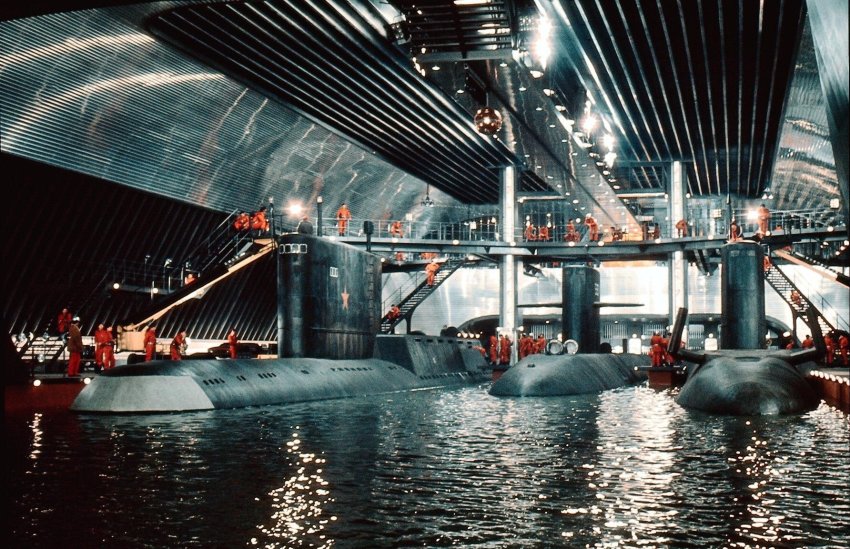
At the end of the day, Broccoli proved to be a steady hand when it came to solely guiding the Bond machine. He went through the gauntlet of multiple legal issues and even smaller day-to-day troubles on The Spy Who Loved Me.
For example, while filming in Egypt, the food was so bad that the crew asked Broccoli if they could shoot through the location without a day off.
Broccoli told the crew not to worry. He would import food from England. The day the refrigerated truck arrived, the crew was excited to open it to leg of lamb and other delicacies. Once they opened the truck, they found it completely empty, however. The shipment had either been robbed or lost.
Not wanting a mutiny, Broccoli went into action. He gathered a list of ingredients and even flew a person to Cairo to get additional items. He then put on an apron and cooked a huge spaghetti dinner for everyone. From that point on, Cubby could do no wrong.
The crew loved him. To show his appreciation, Broccoli even gave them a paid holiday upon returning to London.
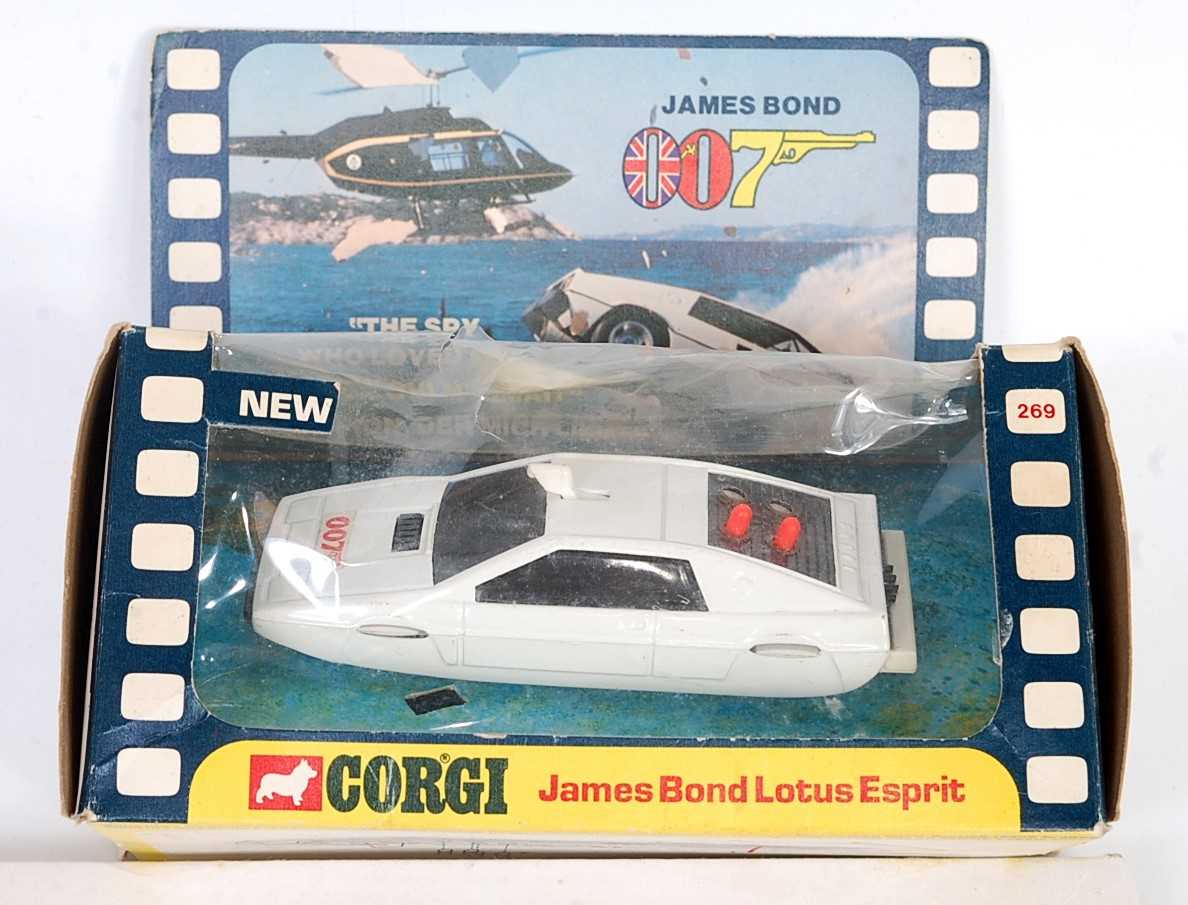
It was from things like this that the idea of Bond productions being a family, a troupe, coming together every few years under Broccoli as a father figure, emerged. Once you were in Cubby’s “family” then you were made.
Bond’s return to the theaters with The Spy Who Loved Me proved to be as successful. It raked in $185 million off a $13.5 million budget, was nominated for multiple awards, and is a favorite of many Bond fans to this day, including Roger Moore. This is quite an achievement, considering the turmoil from which the movie sprang
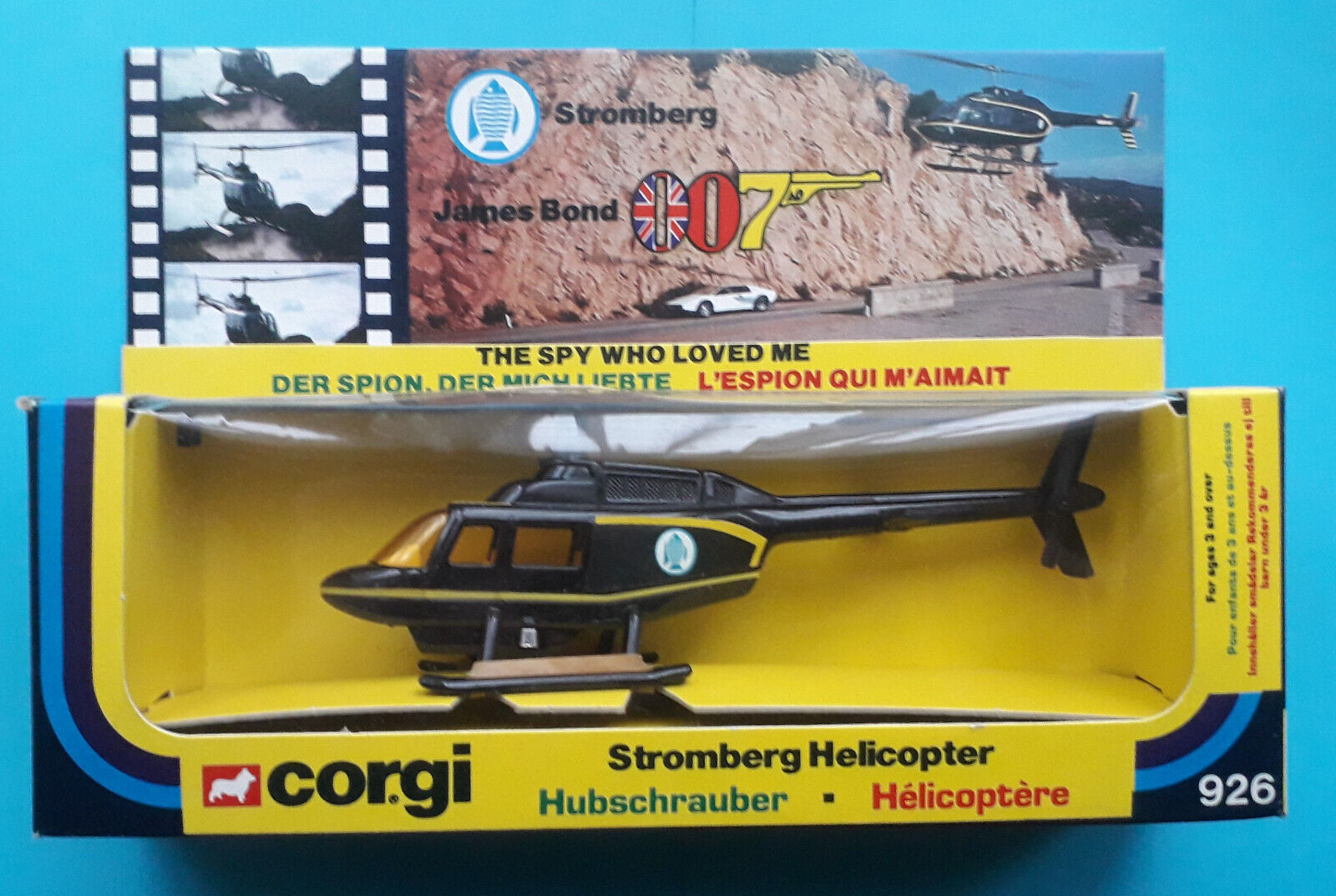
Do You Expect Us To Talk?
Stark: OK, I have to open myself up here. I love this movie. This is also a very, very important movie to me on several counts. First of all, it is the first Bond movie I ever saw. The first one. Its debut on television was a massive deal back then.
I have very fond memories of watching this on TV with both my parents and my brother on an old CRT television with a wooden surround and no remote control and being allowed to stay up late to watch the end. This is the movie that started this lifelong love of all things 007. So without his movie, you might be stuck doing this whole series on your own!
Also… this movie led to the first time I kissed a girl, both of us at a very young and precocious age.
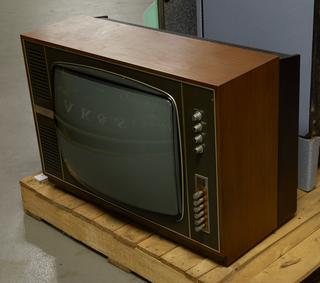
Wrenage: Ah, the good old days, when each new movie viewed was a wood-paneled gateway into heroes and adventures whose only flaw to innocent eyes was scanlines. Clumsy calf-like emotions fluctuated between the butterfly-thrill of a car chases, the sweaty-palm suspense of peril and all-existence being focused down to the single point of a femme fatale’s bare shoulder.
Also, I’m not sure if kissing a pillow with a smiley face drawn on it counts as kissing a girl, but I’ll allow it…
Stark: She had a name. Her parents also owned a local pub. On reflection, maybe I should have stuck with her.
Forget that its basic premise is that of You Only Live Twice all over again, and even has the same director, a super-vehicle, a big thing that swallows other things, and so on.
It basically had absolutely everything I thought I could ever want in a movie that wasn’t called Star Wars. There was a hero, a beautiful woman, a clearly level villain, a hulking henchman, a supertanker swallowing submarines, an underwater base, a shark, chases, shoot-outs, explosions, punch-ups, and a CAR THAT TURNS INTO A FRIGGIN’ SUBMARINE! I am getting giddy again just thinking about it.
Wrenage: You know what’s weird? Some part of my brain associates The Spy Who Loved Me with King Kong 1976. Maybe it is because they both have supertankers in them? Or maybe it is because they both embody a certain grandiose quality?
I’m going to talk completely out of my butt here, lest I have to do research, but it seems like movies were about novelty into the 1930s. They became about movie stars in the 1940s. The 1950s were about escapism as theaters popped up everywhere. The 1960s started to get serious, and then the 1970s gave rise to the auteur.
Meanwhile, Bond cut a swath through those last two decades that affected the course of cinema. Bond pushed things toward spectacle, and Jaws finished the job. King Kong 1976, The Spy Who Loved Me and, of course, Star Wars and Superman then burst the floodgates. From there it was a hop, skip and a jump to the call-and-raise, call-and-raise on the entertainment-factor that drove the 1980s.
Stark: You know, I think you might be on to something here. It certainly also helps explain how Bond simply just keeps powering on despite its obituary being written by commentators in every era.
Ranking And Rating
Let’s get to the ratings and rankings. Wrenage and Stark will give their opinions on the Bondian elements found in The Spy Who Loved Me and come up with a score and ranking to place this appropriately in our league table of all things Bond.
Bond
Stark: It is often said that every Bond’s third outing is their best performance if they get that far. I think it definitely stands for this one.
Moore remains still not full pastiche, but also still very much his own Bond. He has enough hard edge to him, such as when he throws Sandor off a balcony, dumps Jaws in a shark tank, and repeatedly shoots Stromberg. Shows no hesitation in blowing Naomi out of the sky, either. Yet he’s still recognizably good ol’ Rog.
Wrenage: This is interesting. I didn’t read your comments before collecting my thoughts, and here is what I noted about Bond:
“Bond comes off pretty well in this film. For every time Moore is a tad goofy, he does something like let Sandor fall to his death, feed Jaws to a shark or shoot Stromberg in cold blood. Bond’s relationship with Anya also enables him to put some English on the ball, so to speak. Anya is a match for him, and the fact Bond killed her beau gives him a chance to bring a bit of depth to the proceedings. Moore also looks pretty dashing in a naval officer’s uniform.” You then go on to say…
Stark: Also good that Moore gets a run out in the naval uniform. Always feels good when they drop in the reminder that he’s ex-Navy and his official cover at the Ministry Of Defence is a Commander in the Royal Naval Reserves. Very Fleming.
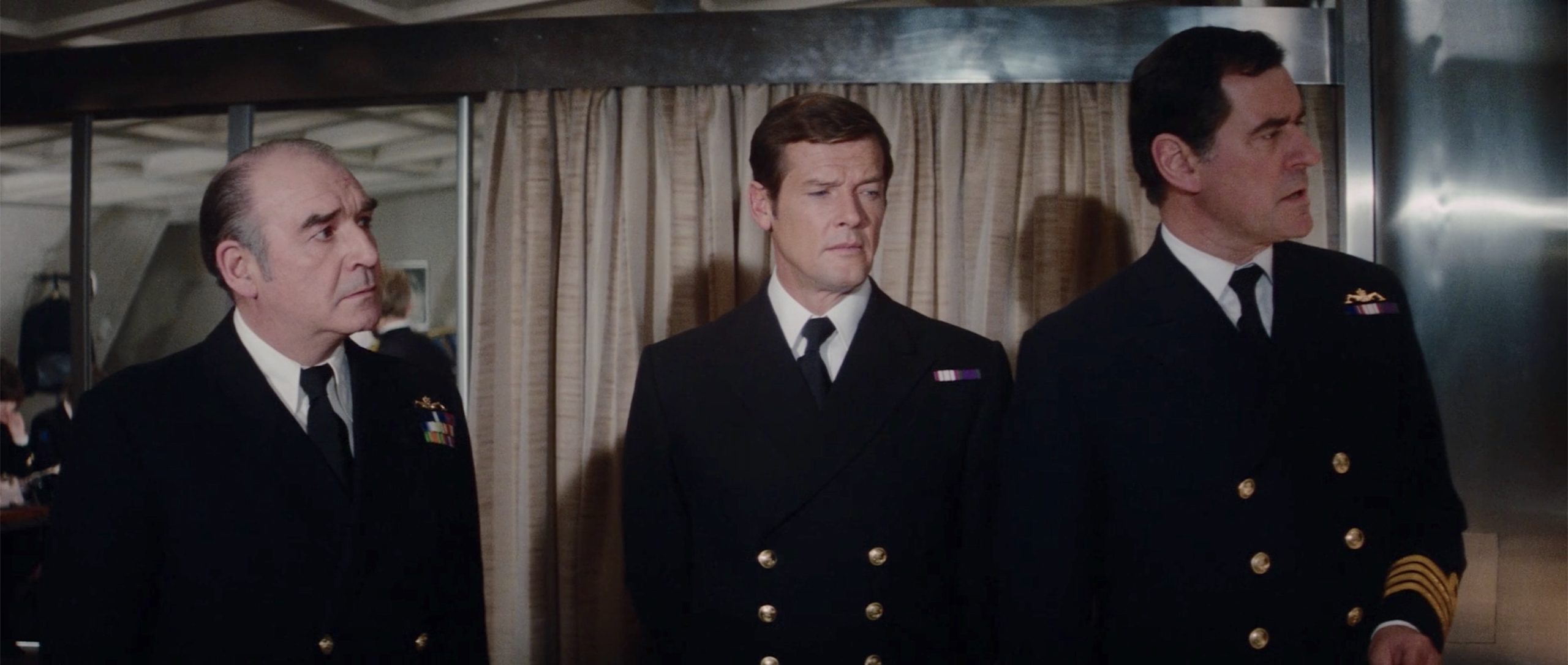
Wrenage: So, basically, we wrote almost the exact same thing about Bond in this section. There is only one thing to reference with this coincidence!
Stark: OK, this is uncanny and now I am a little freaked out. Or maybe we have just synced up, like a team full of women in the office. Shit.
Bond Girl
Stark: So here we go again. All this sniffiness in certain commentators about the inherent misogyny and so on in Bond movies, despite a succession of strong female characters all the way back to the sixties.
Here is another one. If 007 is the best Britain has, then XXX was the best the Russians had. She is talented and trained too. She is his opposite number and his equal. She gets the better of him once or twice.
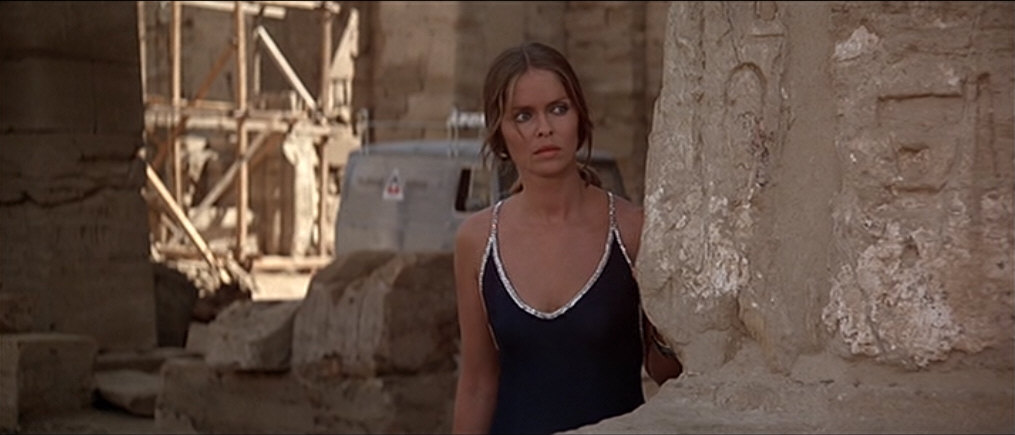
Barbara Bach is just simply stunning. Nobody fills a black ball gown quite like her. Not much of an actress though. Maybe the accent was holding her back here. Either way, Ringo Starr is one lucky son of a bitch. Amazing what being in one of the biggest bands in all of history can do for you, isn’t it?
Wrenage: Band-status grants a man automatic hotness even if their face looks like one of those glasses/big nose/moustache masks.
It doesn’t go the same way for women, though. As soon as you hear a woman is in a band, it’s like…oh, so she is one of those hippy chicks then. Anyway, Barbara Bach is fairly somnolent onscreen, yes. She mostly looks good and follows the try-not-to-do-too-much school of acting and let her co-stars carry the day. It’s a good strategy. Moore has solid chemistry with her, and she is a decently-written character.
The other neat thing about Barbara Bach is that if you every find yourself in possession of a projector without a movie screen, you can use her forehead!
We would be remiss not to mention Caroline Munroe, as well. She doesn’t get to do much, but that woman is flat out frightening. She is femininity weaponized. If conversion therapy was a person… Barbara Bach is a lovely woman, no doubt, but when she shares the screen with Munroe, she comes off like a frumpy pre-teen girl.
Stark: That scene of Munroe getting off the speedboat… confirmed!
Villain
Stark: He’s got an underwater lair. He’s got a pet shark and he feeds his own secretary to it. To top it all off, he’s clearly German! I mean, he’s epically evil.
Wrenage: Stromberg’s plot is wonderfully kooky, and he gets little moments to display big ruthlessness. As you said, he feeds his secretary to a shark.
Yet what I like even more is when he lets the partners-in-crime that he “trusts” leave with the belief they just made themselves millionaires — only to blow them up in a helicopter moments later. Now that’s a guy who gets things done.
Plus, Stromberg has webbed fingers! I don’t know how many times I watched The Spy Who Loved Me without noticing this little detail. In fact, I’m not sure I ever noticed it. I think I read about it somewhere a few years ago and then fired up the movie to confirm it.
Meanwhile, I forgot how well (mostly) Jaws is done in The Spy Who Loved Me. He gets to go all vampire on people, be a ninja with the way he can disappear so easily, gets thrown off a train, has a couple fights with Bond and more. I’m not entirely convinced that giving Jaws a humor element was the right move, but I’m not actively against it either.
The entire movie gives the impression is it out to entertain people, so faulting it for a lack of seriousness at times doesn’t really stick.
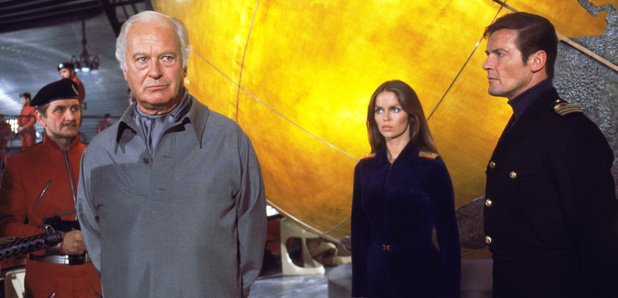
Stark: I am going to make a big, bold claim here. Brace yourself…
Roger Moore has all the best villains. He just does. Yaphet Koto’s Kananga, goddamn Christopher Lee as Scaramanga, Stromberg here. Then what we know is yet to come. The legal issues that stopped them from using SPECTRE until the mid-2010s simply made them more creative than just falling back on Blofeld. As a result, they are more varied, more imaginative, and better performed.
Wrenage: By golly, you are right! That is a good observation. The Moore era fell into the trap of repeating some elements between villains between films, but they did that with the franchise’s first batch of bad guys, too. Like Connery’s villains were often motivated by money. Moore’s bad guys were always memorable in how over-the-top they were. They just wanted to watch the world burn.
Plot
Stark: Villain with a plan for world domination, that requires the eradication of vast swathes of mankind, uses a vehicle that steals something from nuclear powers in the hope he will trigger World War III to assist his aims.
Bond teams up with a foreign agent to stop him, with the help of a fantastical vehicle, and tracks him to his exotic lair. The villain has access to aquatic carnivores to punish failure. Bond eventually faces a hulking henchman and sends him into the pool where the carnivorous fish lives…
Look, you simply can’t get away from it. This is basically a remake of You Only Live Twice. And I don’t care!
Wrenage: Rehashing a bit of You Only Live Twice is fine with me. It goes back to Christopher Wood’s comment about “doing the same thing…but different.” Plus, a submarine-eating supertanker is a lot more fun than a space capsule-eating rocket ship. The extra-laden fight that this location allows in the third act is icing on the cake.
At the end of the day, all of the elements come together pretty well. Not much lag exists to the film, and it feels like they put genuine thought into things. For example, Bond using the supertanker’s surveillance camera as a way to breach the control room’s defenses is a nice touch. None of that needed to be there, but it was there to try to make something fairly straightforward interesting.
Action Sequences
Wrenage: Did you ever notice how they liked to make Roger kick people? Moore’s Bond really enjoys making use of awkward judo kicks. Maybe that is what inspired Austin Powers to use his “judo chop!”
Sure, Moore isn’t as athletic as Connery and Lazenby, but they do a decent job of cutting and camera-angling their way around such things.
Plus, I’m always happy to see big shoot-outs in lairs in Bond movies, and The Spy Who Loved Me does not disappoint in this regard. It tickles me that people actually had this conversation:
“You know that big shoot-out we have in the belly of a supertanker?”
“Yeah.”
“We should have a jeep drive around and crash in that scene, too.”
“Brilliant!”
Stark: People often forget that Moore was a few years older than Connery, and like you say, he was nowhere near as athletic. Knitwear model and actor vs. bodybuilder and actor.
And, yes, thanks to Austin Powers you can’t watch a Roger Moore Bond fight without hearing “Judo chop!”
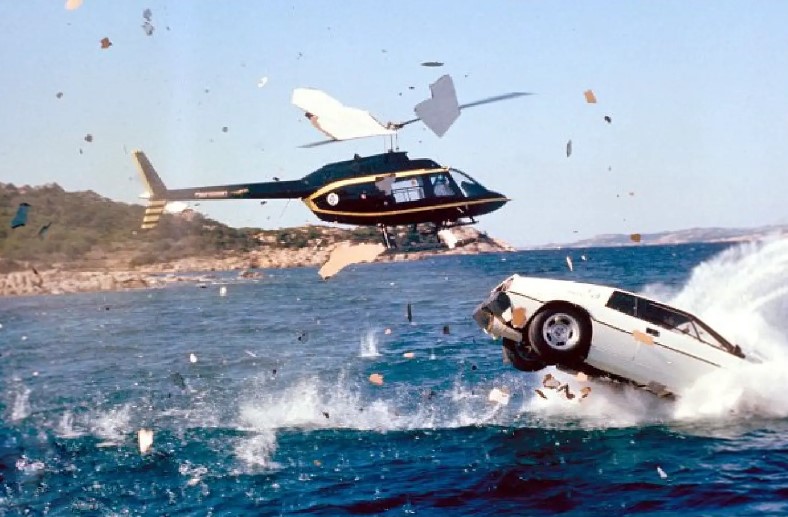
Wrenage: They have nice squib work on the helicopter/lotus chase. I always liked that scene where Bond whips around the curve to see the helicopter hovering over the road, waiting for him. Then the way the helicopter spins to continue the chase. Besides having good villains, the Moore movies always seemed to have top-notch driving and aerial crews, as well.
Stark: The growth of that scale was exponential once Broccoli took over on his own. Makes you wonder whether Saltzman was holding back some ambition there?
Wrenage: It’s possible. About the only place The Spy Who Loved Me lacked ambition was the miniature of Stromberg’s underwater lair. It looks like they underbuilt that. While the supertanker and submarines look great, the underwater lair clearly comes off as a miniature. The behind-the-scenes photo above shows its true scale, and I was surprised they made it that small. If the miniature supertanker was 65-feet long, the underwater lair should have been at least twice as big as it was to give it better scale on film.
Pre-Title Sequence
Stark: Potentially the best one so far? Also sets that template and standard for all that would then come afterwards. The pre-title sequences are famous now for that big, signature stunt on a mini-mission before the main show. However, think back. They weren’t like that until The Spy Who Loved Me. It kind of set that standard.
Wrenage: The Spy Who Loved Me is definitely a calorie-dense pre-title. A lot of things happen. Submarine stuff. Assassin dispatching. A simply, yet highly-effective stunt/gag. Plus, a switcheroo where you think the man with a chest hairier than Connery is Agent XXX, but it is really Anya.
As we mentioned in another Bond article awhile back, that man was Michael Billington. He was considered to play Bond after Connery departed. At that point, they must have been using hairy chests as the main standard for choosing Bond. Had they continued with that, Roger never would have made the cut…
Stark: Hirsuite = manliness. It’s only these modern-day twinks with their waxed, baby-smooth bodies that have ruined it all. Real men are insulated and leave a little something behind after using the bathroom.
Theme Song
Stark: An all-time classic and a simple statement and “fuck you” to the doubters?
Wrenage: Nobody Does It Better is not my type of music, but it has a catchy element to it. Maybe one reason it works is that it pairs well with Binder’s opening credits. Is this the first time a Bond actor is actually featured in the opening credits? Maybe not. I think Connery was in the opening credits, right? Didn’t they feature him in the Goldfinger opening credits?
Stark: Yes they did.
Wrenage: As for the score by Marvin Hamlisch, he is an interesting choice. When I think of John Barry, I think jazz. When I think of Marvin Hamlisch, I think musicals. Yet, Hamlisch actually did a fair amount of films, too, including The Sting and D.A.R.Y.L. That is a weird one-two punch right there. The score in The Spy Who Loved Me can get a bit too disco at times, but it’s the 1970s. What are you going to do?
Stark: They called the signature sound he created Bond ‘77 and when I was a kid I loved it. It has dated now.
X-Factor
Stark: So I need you to be my barometer here. Am I just overly nostalgic for this movie for all sorts of reasons, or is it really as it appears? That this is THE archetypal Bond movie of the 70s and 80s and it’s X-Factor is simply off the charts? Do you need to talk me down?
Wrenage: I view X-Factors a bit differently, so it is not a huge X-Factors movie to me. Rather, a few fun tidbits stand out. For example, Boba Fett is in this movie. Jeremy Bulloch is one of the crew members on the submarine that attacked in the pre-title sequence.
Also, “Wine Guy” makes his first appearance. Wine Guy would end up appearing in Moonraker and For Your Eyes Only, as well. He was an in-joke inserted by the crew. Wine Guy is played by Italian director Victor Tourjansky. The Bond Crew needed a funny take of someone reacting to Bond driving his Lotus out of the ocean. Tourjansky was there to help with filming and stepped in to the role. He asked if he could use a bottle of wine as a prop, and the rest is history.
Stark: Wine guy is way better than a double-take pigeon, but that’s for another installment…
Scoring Breakdown
| Stark | Wrenage | |
| Bond | 8 | 7 |
| Bond Girl | 5 | 6 |
| Villain | 7 | 9 |
| Plot | 6 | 8 |
| Action Sequences | 8 | 8 |
| Pre-Title Sequence | 9 | 9 |
| Theme Song | 8 | 7 |
| X-Factor | 9 | 5 |
| TOTAL | 60 | 59 |
Stark: If it was just my score of 60, that would put it squarely into third place behind From Russia With Love and On Her Majesty’s Secret Service. Right now, on the tenth movie, that feels about right. Maybe there is some real science behind this scoring method of yours!
Wrenage: I can’t lie, but I can brag. I was a C+ student, so I’m a bit of a whiz with numbers. I differ with you on some things, but our average score came out close.
I feel like Goldfinger should probably be above The Spy Who Loved Me at the end of the day, due to iconography, but my feelings don’t matter. Only the numbers.
Now then, though…Thunderball and Live and Let Die are tied. Which one gets pushed out for now? I prefer Live And Let Die to Thunderball slightly because Live and Let Die is a bit breezier. In the long run, it likely doesn’t matter because there will be more shuffling of the tiers later.
Stark: Pushes somebody out of that top bracket though… but you know I am gonna go with Thunderball being above Live And Let Die. So we are at an impasse. We might have to put this to Outposters?
Wrenage: That should work smashingly well! Here is a live look of Thunderball and Live and Let Die being sent out to the Outposters for a decision right at this moment…
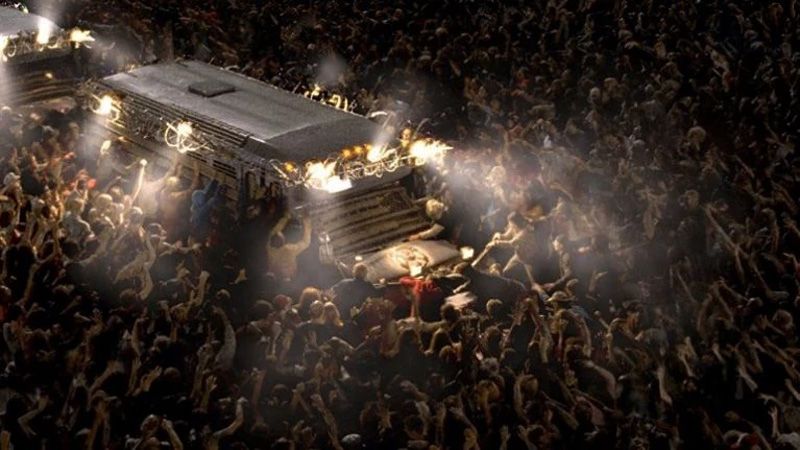
Overall Rankings
First Tier:
From Russia With Love (61.5)
On Her Majesty’s Secret Service (61)
The Spy Who Loved Me (59.5)
Goldfinger (54.5)
Thunderball (53)
Live and Let Die (53)
Second Tier:
You Only Live Twice (51.5)
Dr. No (49.5)
The Man With The Golden Gun (38.5)
Diamonds Are Forever (34.5)
Third Tier:
(Empty)
Fourth Tier:
(Empty)
That’s A Wrap
Stark: Final thoughts from me. It really makes me laugh when normos talk about Bond and say, all the time and as people have every few years, “Oh, Bond is done!” and so on.
That’s what they said here, too. They said it after Connery left. After Lazenby quit. After The Man With The Golden Gun underperformed, Saltzman left… it is said every few years, regular as clockwork, even now.
Think about how modern Hollywood would have reacted. Cancellation. A badly planned reboot. A complete retooling. Flopped about in abject panic making stupid decisions, further damaging the IP and their own credibility. The DCEU is a classic example.
Facing the utmost adversity across the board, how did Broccoli react? He simply stuck to his plan and went BIG! Bigger than anyone had ever done before. So big that he had to build the world’s biggest sound stage to pull it off.
No panic. No throwing away and casting off what had made it a success before. He said “Let’s put all the money on the screen and make it unmissable.”
Wrenage: It is tough to kill Bond because he is basically a family institution at this point. Like you said, you remembered watching Bond as a kid, and it was a big deal, so it is something people want to re-experience.
Then kids from each Bond era grow up and pass Bond on to their kids. It becomes a “bonding” experience, if you will. Bond makes people feel young again. That’s why I think it is a huge mistake on the part of filmmakers to keep putting old movie heroes on the screen.
No one wants to see their heroes get old because it reminds them their parents got old and they are getting old. Movie heroes are supposed to exist in a place untouched by time, forever punching out supervillains and driving supercars with supermodels at their side.
NEXT TIME… James Bond goes into space… yes, really… in Moonraker.
Check back every day for movie news and reviews at the Last Movie Outpost


